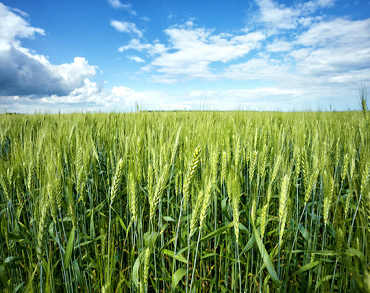Blog details

How to Grow Good Wheat
Growing healthy and high-yielding wheat requires proper planning and practices. Here’s a step-by-step guide tailored for farmers:
-
Choose the Right Variety:
- Select a wheat variety that suits your region's soil type, climate, and rainfall patterns.
- Opt for high-yielding, disease-resistant varieties recommended by agricultural experts in your area.
-
Prepare the Land:
- Plow the field to loosen the soil for better root growth and aeration.
- Ensure the soil is well-drained and has a neutral pH (6.0–7.5).
- Add organic manure or compost to improve soil fertility.
-
Sow at the Right Time:
- Plant the seeds during the recommended sowing season for your region.
- Follow proper seed spacing (about 20–22 cm row-to-row distance) to allow adequate sunlight and air circulation.
-
Use Quality Seeds and Treat Them:
- Use certified seeds with good germination potential.
- Treat seeds with fungicides or bio-pesticides to prevent early diseases.
-
Irrigation and Water Management:
- Provide the first irrigation within 3–4 weeks of sowing.
- Critical stages for watering include crown root initiation, tillering, flowering, and grain filling.
- Avoid over-irrigation, as waterlogging can damage the roots.
-
Fertilizer Application:
- Apply nitrogen, phosphorus, and potassium (NPK) based on soil test results.
- Use split doses of fertilizers for better nutrient uptake.
-
Weed Control:
- Remove weeds during the early growth stages to prevent competition for nutrients and water.
- Use manual weeding or herbicides as per expert advice.
-
Pest and Disease Management:
- Regularly monitor the crop for signs of pests like aphids and diseases like rust.
- Use biocontrol methods or recommended pesticides as needed.
-
Harvesting at the Right Time:
- Harvest wheat when the grains are fully mature and the plants turn golden brown.
- Ensure the moisture content of the grains is around 12–14% for optimal storage.
-
Post-Harvest Handling:
- Clean and dry the grains properly before storage to prevent spoilage.
- Store wheat in a cool, dry place to maintain quality and avoid pest infestations.
